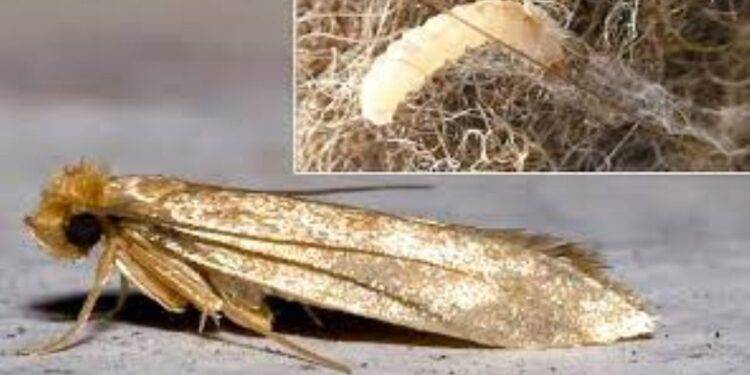It’s not random that your clothing fabrics keep ripping. Moths are often the background cause of that.
During winter, they are a major concern with a potential infestation in residences. This is due to the abundance of moisture that supports their existence. Hence, most people find means to shield their homes from these fabric destroyers.
If you’re presently battling with this moth species, there are some ways you can deal with them for good. But firstly, you should have an in-depth knowledge of the pests. That will guide you on what preventive measures to take or discard.
We’ll take you through multiple facts about clothes moths. Most importantly, you’ll learn ways to fight them off in your space.
What Are Clothes Moths?
Beyond the small winged and tiny insects you see, this type of moth is a household pest. They’re mostly among clothing materials found in dark locations. These places include your wardrobes, cabinets, closets, cupboards, etc.
They lay 40 to 50 eggs within three weeks. These sticky eggs have pointed heads and are also very small. Once they’re hatched, the larvae begin to wobble around on the harboring fabric. They are creamy-white and about a half-inch long.
The two divisions of clothes moths are webbing and case-making moths. While the former is known for its spinning web-like substance, the latter is wrapped in a silken case.
How Do Clothes Moths Feed On Fabrics?
Adult clothes moths aren’t responsible for the damage precisely. All they do is lay their eggs on clothes, leaving the resulting larvae to fend for themselves. Often, these clothes are sweaty and stained enough to give the nutrients needed to aid their development.
What Other Materials Do Clothes Moths Feed On?
The garment likers aren’t entirely dependent on fabrics. Generally, they eat textile and animal-based products containing keratin. Some of these are
- Silk
- Leather
- Fur
- Wool
- Felt, etc.
Likely Places To Find Clothes Moths
Previously, we mentioned that they’re often seen in poorly lit places. In addition, you can find them in your basement, walls, furniture, couch, and stores, where old dresses are kept.
Also, they feed on fibers in animal nests. This is to say, if you have birds nesting in your home, they may have attracted clothes moths.
Preventive Measures For Clothes Moths
The preliminary method to prevent clothes moths is cleaning your clothes frequently. Ensure you do your laundry and not stack up dirty fabrics. That’s because clothes moths find this type of clothing suitable for egg-laying.
After washing, iron these clothes and brush them off to detach all eggs. Be thorough with the process to ensure effectiveness. Store the clothes in plastic bags and seal them until the next time they’ll be used.
Moreover, you can disinfect your house if you notice a moth invasion. If you can’t do this yourself, you can contact a pest control expert within your area. Click over here to consult a professional today.
Conclusion
Now that you know how dangerous clothes moths could be, you mustn’t lure them to your property. The extent of damage can be unbearable. To learn other control methods, find out more.









